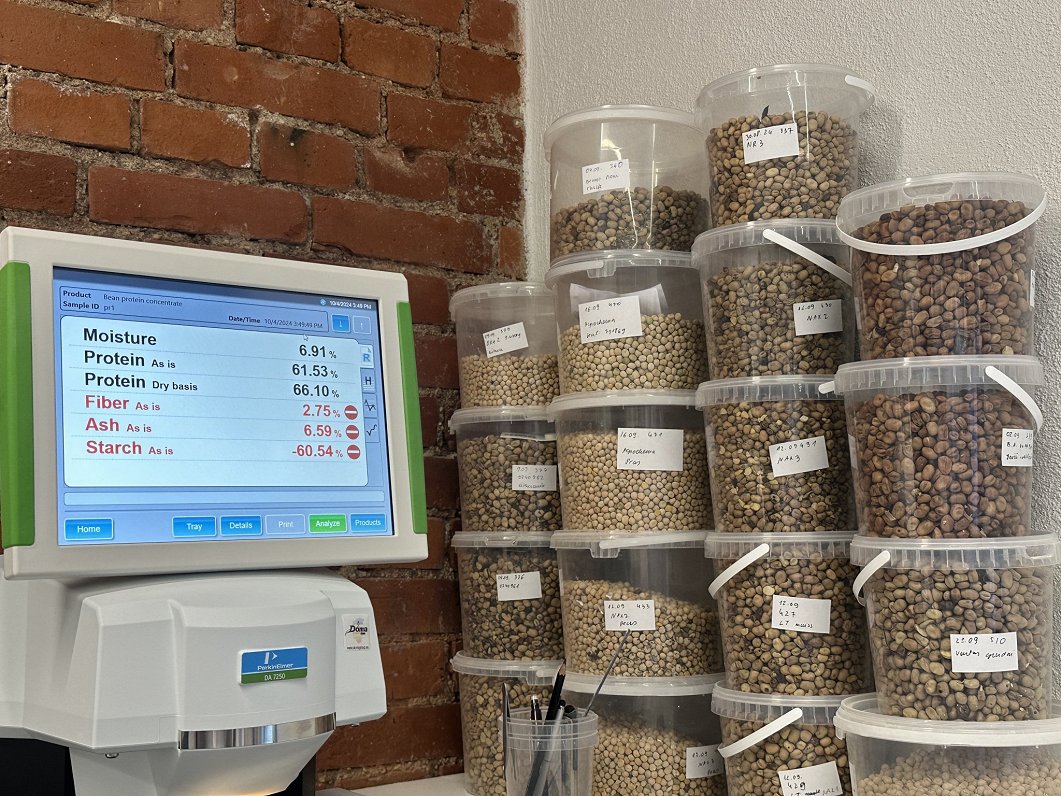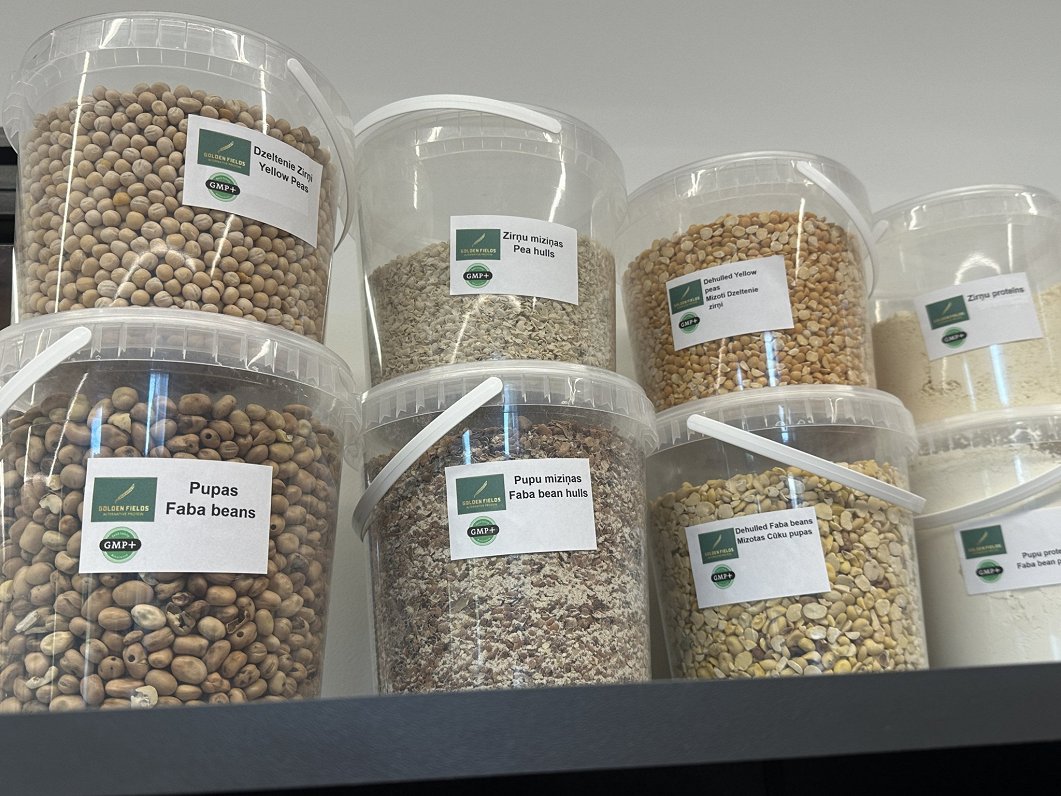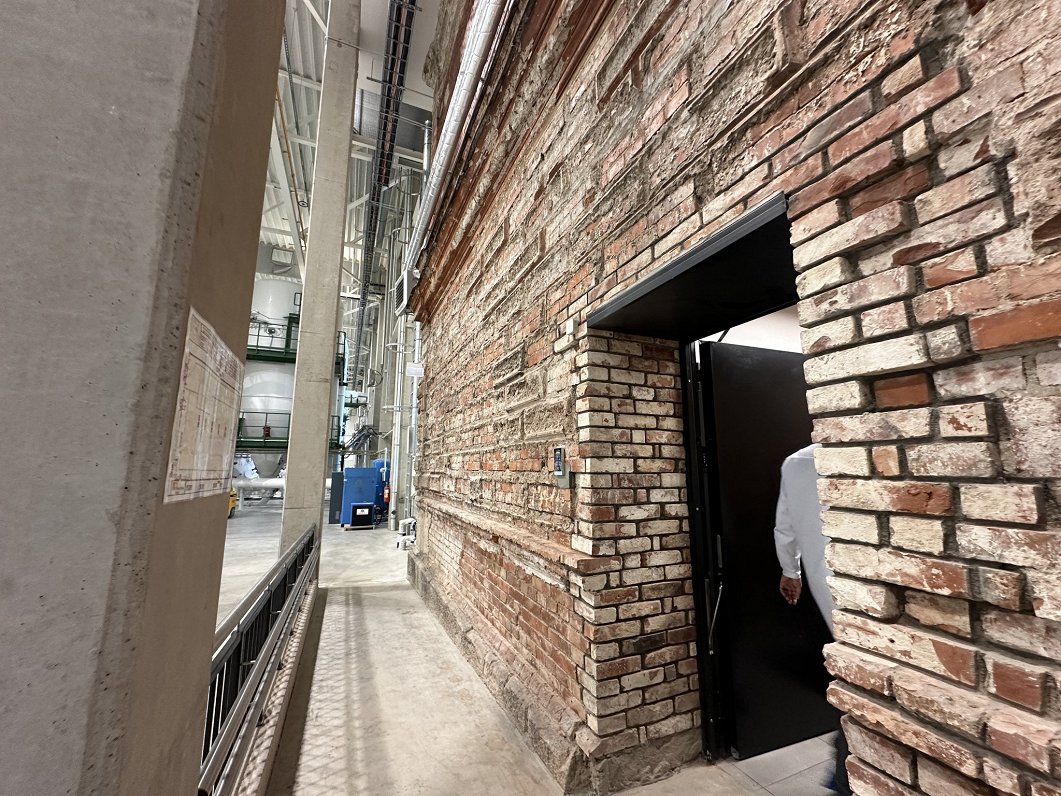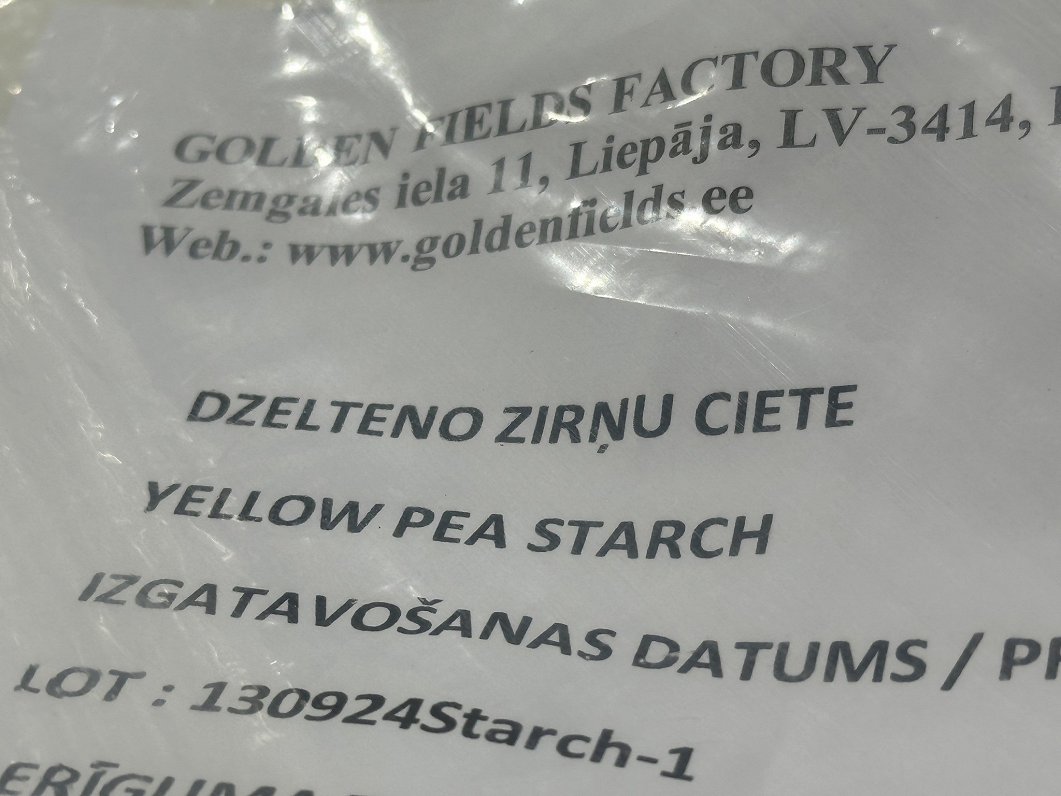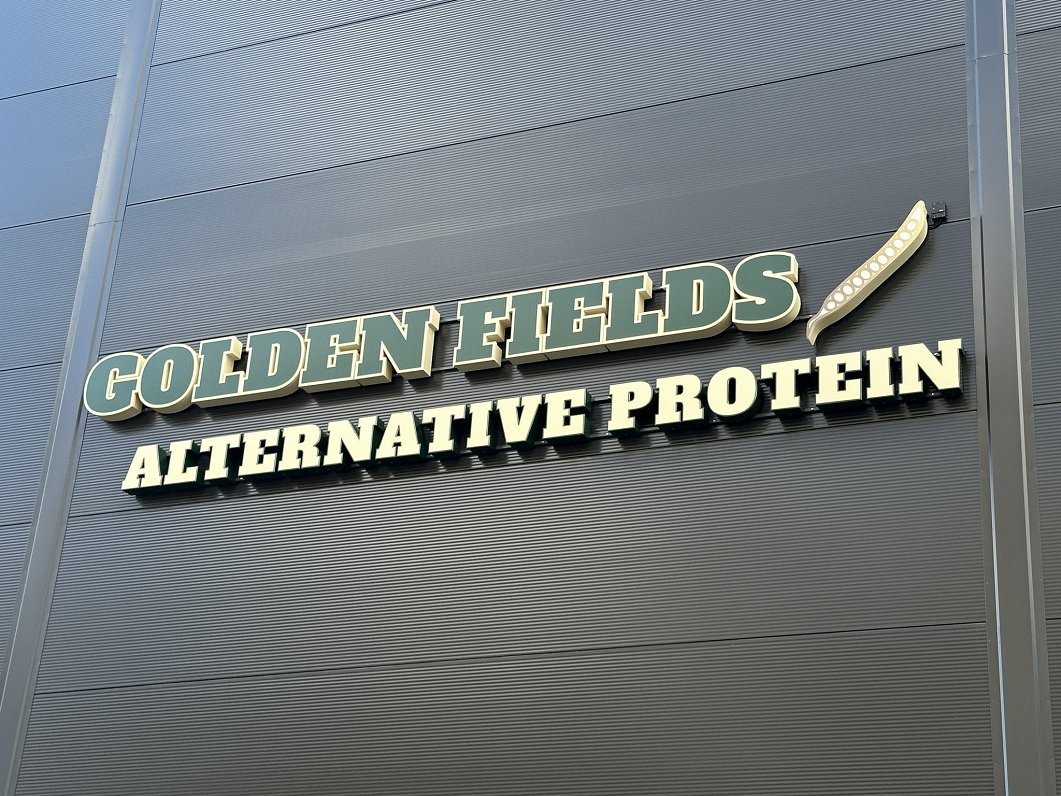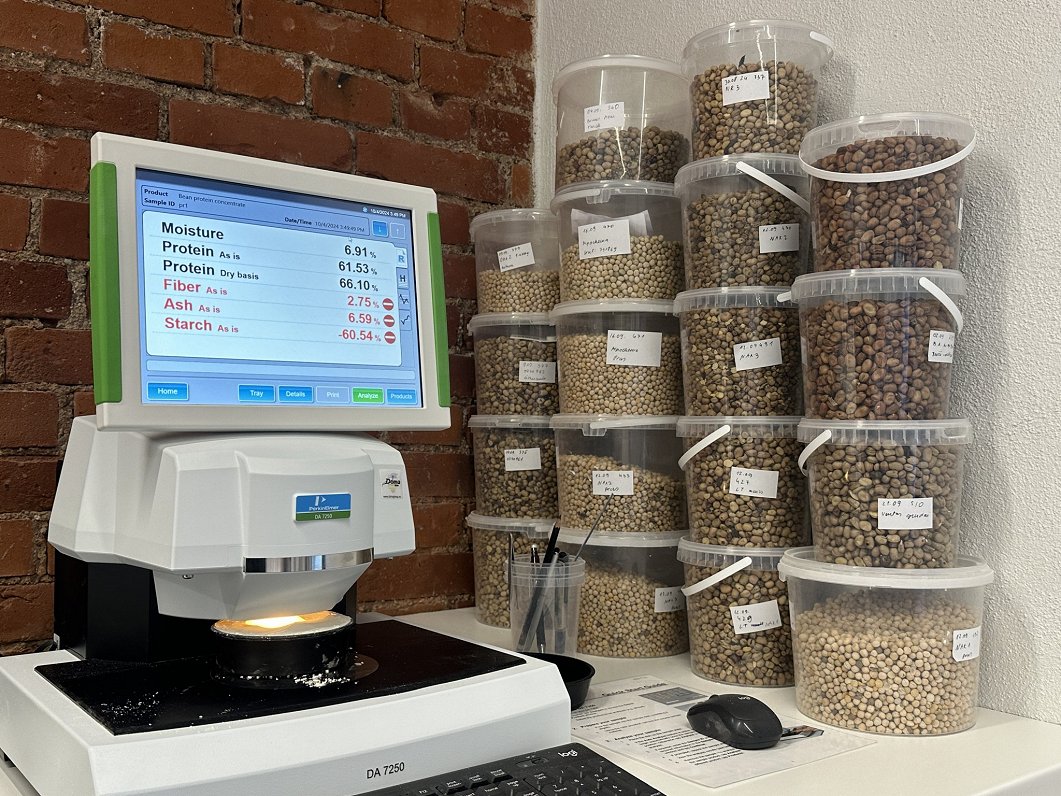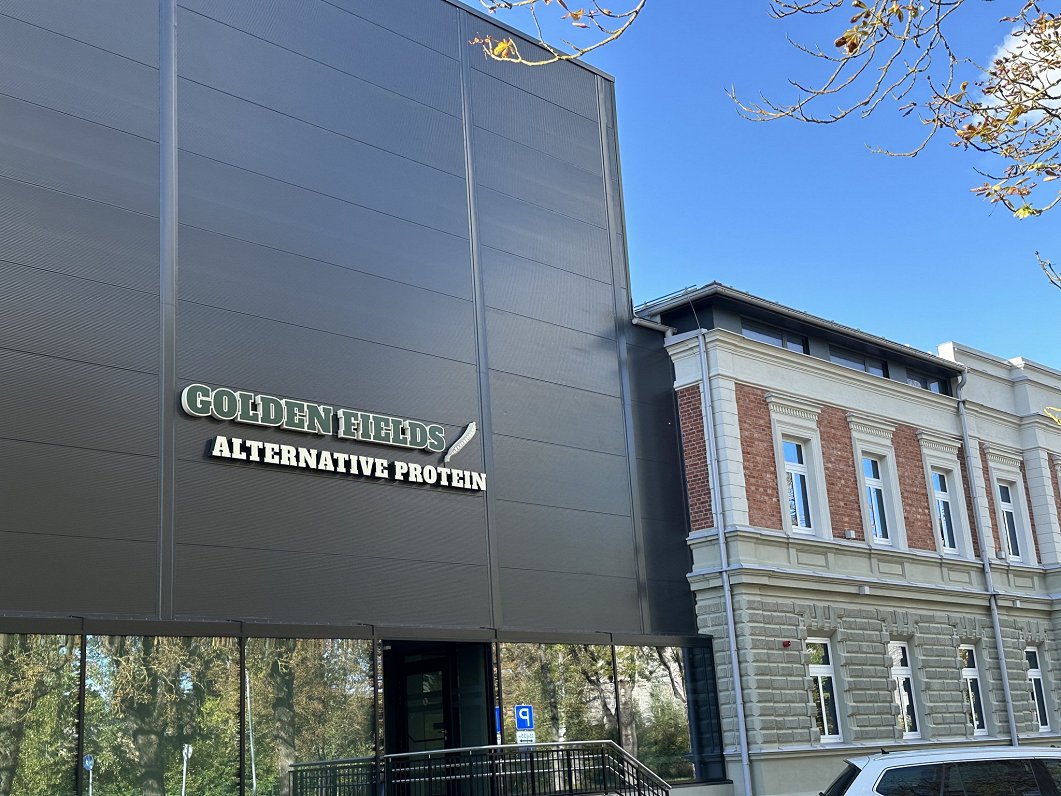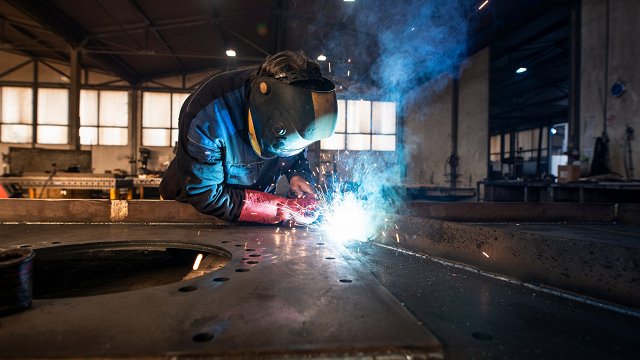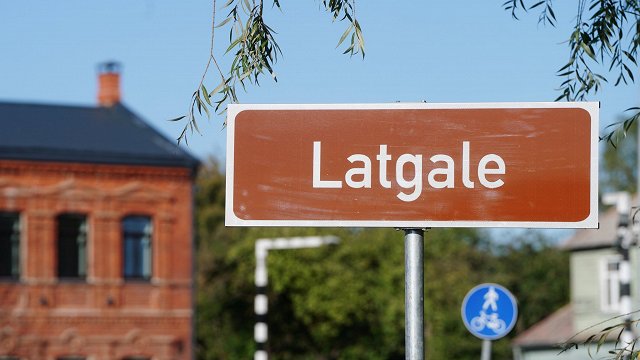Linda Diedišķe, the laboratory specialist, outlined how protein production is carried out:
"We buy peas and beans. We peel them, here are the husks and the peeled peas and beans. We grind them and separate them into two fractions with the help of air. Everything is done mechanically with air, no water is needed, we can simply separate the starch from the protein."
Europe currently imports more protein than it exports, said Kristaps Milts, group purchasing manager at Golden Field Factory LV:
"The volume of protein in the world is increasing. There is all this vegan stuff that is fashionable, so protein is in short supply at the moment."
Approximately 3 tonnes of protein can be produced per hour. To ensure full operation, it is necessary to increase the electricity capacity, explained a company spokesperson:
"When one tonne of beans is ground, about 30% to 35% is protein, the rest is starch. That's the breakdown. We have a contract with Bunge for the protein, for the starch we are looking for a market to sell and market it. Starch is difficult at the moment. We know that in China they have started to use it, to put it in pasta and other things. It is starting to be used in food, but it is not so widespread that there is demand."
The protein produced in Liepāja goes to various countries around the world, and is bought by the aforementioned Bunge company.
"European countries, Scandinavia, the Middle East, samples have been sent to Japan and the USA. We will see, but Bunge is now buying everything and selling it to the end customer, they are looking for outlets."
Beans and peas for processing are purchased from Latvian and Lithuanian growers. The protein produced in Liepāja can currently be used for animal feed, but will soon be available for human use, said company manager Omar Hajir:
"We are working to be certified to produce protein for human consumption by mid-2025. This means that this protein can be used in a variety of products - burgers, nuggets, sausages, and other products available on the market."
Currently, the company operates on a no-residue production principle - whatever is left over is used to produce fodder in the Saldus region, Milts said:
"There will be a pellet production in Saldus, where our starch and bark will go. Estonia and Lithuania have hay factories, that process alfalfa or maize silage. It is all dried, milled, and compressed into rolls or bales. They go to the Middle East, where grass does not grow so much. Lower quality hay is also good, and that goes to Saldus, where it is mixed - starch, bark, hay. It's pressed and made into pellets - animal feed."
The location of the plant in the industrial park of Karosta and in Liepāja is not accidental. The Liepāja location is interesting for investors from the United Arab Emirates and work will continue. Mārcis Maksims, Deputy Ambassador and Counsellor of the Embassy of the Republic of Latvia to the United Arab Emirates, expressed his views on this:
"The port [attracts investors] in itself. You can also locate production facilities right in the port area, the environment is in place so that you can start production quite quickly and in a short time. Also the proximity to Europe, we [Latvia] are a member of the European Union. For the Emirates, this is an understandable unit. A single European market, regulation."
With the establishment of Golden Field Factory LV, attracting an investment of €16 million, agricultural processing has returned to Liepāja and significant investment from the United Arab Emirates and the United States has come in.
